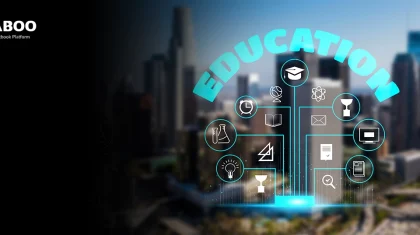
How Education Technology Will Revolutionize Learning
Summarize this blog with your favorite AI:
The classroom reality has changed drastically in the past decade. The advent of the internet and the popularization of digital devices brought a new context for teachers and school administrators, since students started to bring technology to the school routine.
The school, in turn, cannot turn its back on this new reality, but must incorporate educational technology into pedagogical practices. Knowledge sharing has become more comprehensive and capable of reaching dimensions previously unthinkable.
During these years, the development of educational technological solutions has proved to be extremely efficient in supporting school management and the teaching-learning process. For this, educators need to seek information and knowledge.
In this article we will talk more about how educational technology can help in the management of a school.
1. Autonomy and Orientation
Some educators may think that the rise of technological tools is replacing professionals. However, this cannot be farther from the truth. While providing students with autonomy in learning, the school will still need educators and managers capable of reflecting education and the best ways to use these new instruments.
Educational technology, on the other hand, facilitates the measurement of results, the compilation of information and the transmission of knowledge, enriching pedagogical strategies.
2. Efficient Management
One of the great challenges of today’s schools is to promote efficient management, which optimizes financial resources and improves services, in the name of quality education. Educational technology “appears as a possibility to increase the speed of decisions, to improve the quality of information and to measure pedagogical processes more assertively”, says Ben M. Rodriguez, educator at Write My X and Britstudent. This will give the head of the educational institution access to all the data needed to run a school efficiently.
3. Software and Applications
Among the most used resources are software and applications that bring a full range of information, in addition to pedagogical and management tools. Management-related technologies seek to assist in school planning and monitoring the quality of services.
4. Participation in The Collaborative Economy and Creation Networks
The digital diffusion of education enabled the development of the collaborative economy, which refers to an economic system in which companies and several independent creators and producers aggregate and create value jointly in freely interconnected networks.
“Co-creation, open innovation and participation architecture are terms that designate collaborative initiatives in open projects for the development of educational technologies, products, digital platforms and organizational processes”, says Clarence L. Ollie, publisher at Australia2Write and NextCoursework.
With the new forms of networking, business development professionals accept the challenge of creating and producing openly with their partners and users. Therefore, the ability to establish collaborative networks and produce from them becomes a required skill to take the next steps in education technology.
5. Stimulating Reading in The Classroom with The Help of Technology
Lack of interest in reading is a recurring problem. However, it is possible to use the digital universe to encourage the habit of reading. Being able to read on tablets, smartphones and even e-readers, besides being very practical, is an excellent way to motivate young people who do not let go of the small screens to discover the world of reading. Some applications have the option to consult dictionaries within the digital books themselves, and there are also libraries that lend e-books.
Inspired by this idea, teachers can also take advantage of technology to make the reading experience even more interesting and enriching by referring to films, video reviews, interviews with the author and other documents online, conducting diverse research, among other possibilities.
Of course, there’s the inherent issue that the internet contains a frightening number of incorrect information and poorly written texts that can end up misinforming students. However, there are also a multitude of very interesting sources, which can contribute to enrich students’ research and present them with unique and complete points of view. Getting in touch with book publishers and editors is a good idea to get information on what type of e-book educators should be recommending to their students. (Here are the top 10 advantages of eBooks over printed books)
In order to keep up with this constant evolution and promote quality education, sensitive to the particularities and diversities of the world, tolerant and able to share knowledge, it is important that the school remains updated and seeks to innovate.
Here are 9 reasons why publishers should move to digital eBook libraries.
Author Bio:
Beatrice is a professional copywriter at Essay Help and Academicbrits.com specializing in all kinds of topics. She is always open to share her personal experience at Phdkingdom.com as well. She’s a big promoter of applying technology to education, and has given several lectures on the topic across the US.
Discover how a mobile-first training platform can help your organization.
KITABOO is a cloud-based platform to create, deliver & track mobile-first interactive training content.


